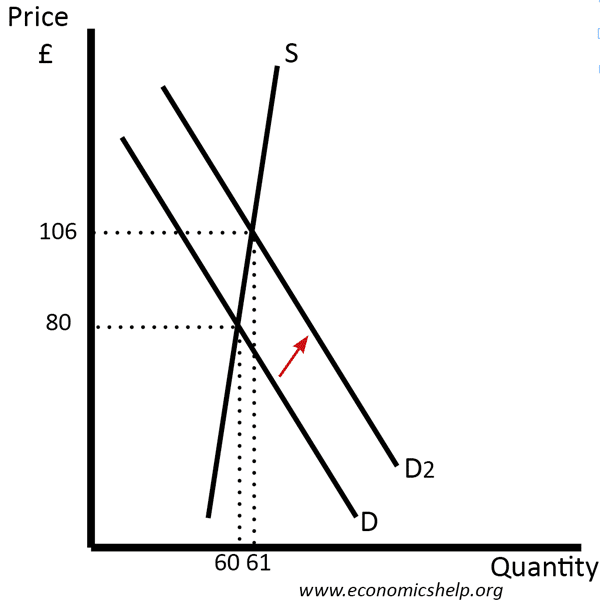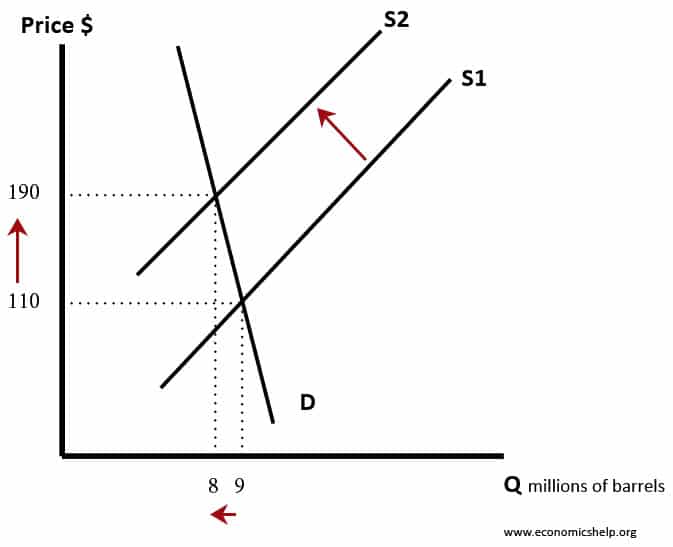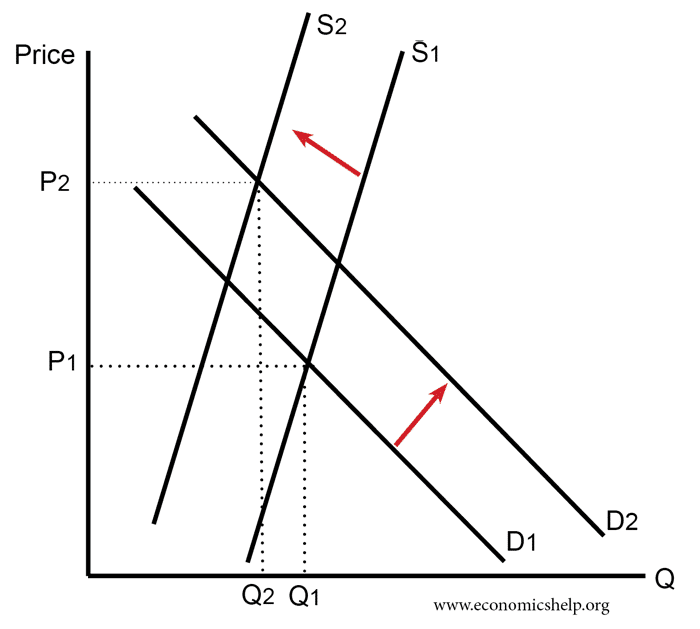Resource scarcity is defined as a situation where demand for a natural resource is exceeding the supply – leading to a decline in available resources. When we talk about scarce resources, we usually imply that current use is unsustainable in the long-term.
Scarcity can involve non-renewable resources, such as oil, precious metals and helium. It can also involve potentially renewable resources, which are being consumed faster than their ability to replenish (e.g. over-fishing, excess use of fresh water.)
Causes of scarcity
- Demand-induced – High demand for resource
- Supply-induced – supply of resource running out.
- Structural scarcity – mismanagement and inequality
- No effective substitutes.
Demand-induced scarcity

A rise in demand can cause a resource to become scarce. For example, when a civilisation has a small population, freshwater is abundant with hardly any opportunity cost. However, with a rising population, a well or reservoir may fail to keep up with the increase in demand. For example, between 1950 and 2000, the population of Sub-Saharan Africa increased from 177 million to 657 million creating increased pressure on the limited farmland.
The global population has increased from 2 billion people in 1927 to 7 billion in 2012. This dramatic increase in people (combined with rising incomes and economic output) has put a greater strain on many natural resources – causing greater scarcity amongst some resources and new forms of scarcity – such as rising sea levels.
According to a UN report, the last century saw a dramatic increase in annual global resource extraction – From 7 billion tons (7 Gt) in 1900 to about 50 billion tons (55 Gt) in 2000 (UN Renewable Consultation) p.19
Demand induced scarcity could occur due to:
- Growth in population.
- Growth in real GDP and incomes enabling people to consume more resources than before.
- Changes in preference, e.g. growth in demand for mobile phones, places greater demand on certain metals, like cobalt and nickel used in the production of lithium batteries. Increase
Supply-induced scarcity

If the supply of a resource is depleted or put under threat, it will cause a shortage of the good and scarcity. In Sub-Saharan Africa, climate change has contributed to the increased desertification of the land and encroachment of the Sahara desert. Since 1900, the Sahara desert has grown 250km to the south. There is a similar situation in China with the growth of the Gobi desert reducing land.
Supply induced scarcity can also be due to
- Bad weather/crop failure. A localised scarcity can occur if there are particular problems. For example, a fungal disease could decimate a crop like olive trees, causing a shortage of olives.
- Degradation of supply. Another form of scarcity is when the resource is polluted making it unfit for consumption. For example, a nuclear power disaster causes radiation which makes drinking water and farmland unusable in the surrounding area.
Structural scarcity
This occurs when the problem is one of distribution. There is abundant water in the world, but in certain areas, there may be a shortage of supply due to lack of access. A country with great inequality may cause scarcity for some. For example, resources may be owned by a small percentage of the population and the poor may be unable to afford to buy the water supply.
Combined effects

Often scarcity is caused by a combination of demand and supply induced effects. A rise in demand, e.g. due to rising population causes overcrowding and population migration to other fragile ecological areas. The increased farming and use of these fragile areas can lead to resource degradation causing a further fall in the supply of viable land. This creates a negative feedback loop with scarcity causing more strain on the limited resources and therefore more pressure to cause more scarcity.
Other factors contributing to scarcity
No alternatives
It is hoped that when a good becomes scarce the market mechanism will provide an incentive to develop alternatives. For example, with oil becoming more scarce, there is an incentive to develop electric cars which run on solar power or wind power.
However, if technological substitutions are not available then scarcity is a more serious problem, for example, there is often an alternative to oil, but if water becomes scarce – there is no meaningful alternative.
Damage to resources cannot be rectified
When clean air becomes polluted through radiation and pollution, it is not easy to end the scarcity of clean air. The air is dependent on global factors and even if pollution is stopped, some pollutants and radiation will last for a long time. Once some pollutants are released, they will last for a considerable time.
Related

Amazing articles! Great resources!
Thank you Tej.
Worthwhile reading; very simple, and easy to understand. Thanks for the nice work!
is tit true that scarcity is the source of economic undertakings??